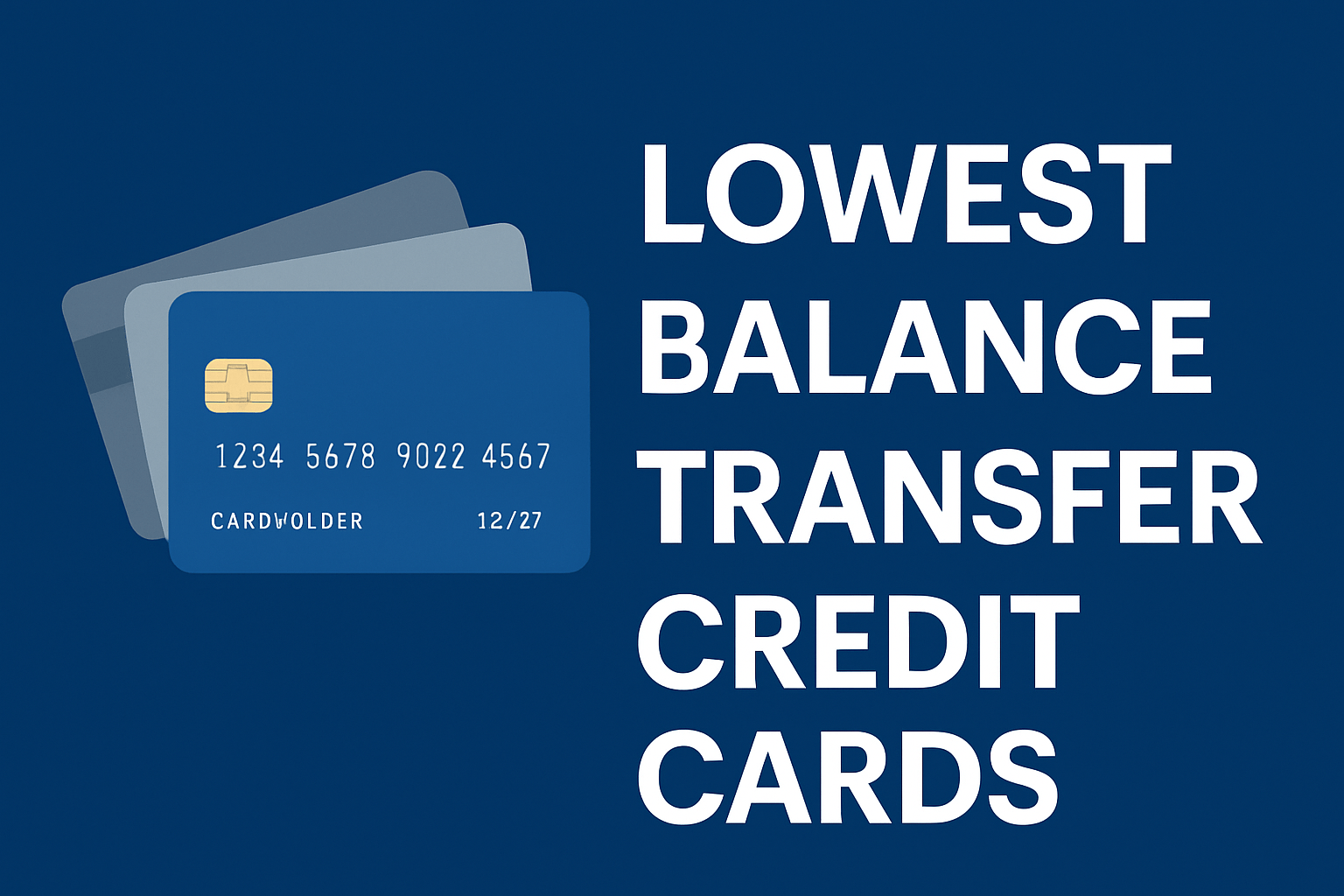Your cart is currently empty!
Lowest Balance Transfer Credit Cards

Finding financial breathing room can be challenging in today’s economy, especially when high-interest credit card debt eats into your monthly income. That’s why many individuals in the US, UK, Italy, and Europe are turning their attention to the lowest balance transfer credit cards as a smart financial move. These cards allow users to transfer existing debt from high-interest accounts to a new card with a significantly lower or even zero interest rate, often for an introductory period. This tactic can offer immediate relief, empowering users to repay balances faster and regain control over their financial health.
Why the Lowest Balance Transfer Credit Cards Are Financial Lifelines
When interest charges snowball, it becomes increasingly difficult to reduce your actual debt. That’s where the lowest balance transfer credit cards prove their value. These cards are specifically designed to alleviate the burden of compounding interest, giving users a set period to repay balances without the stress of added charges. Most of these credit cards offer an introductory 0% APR period, ranging from six months to as long as 21 months. This grace period allows cardholders to focus solely on reducing their principal balance without the interference of ongoing interest.
Moreover, for consumers who are committed to budgeting and disciplined repayments, this option is a pathway to faster debt elimination. Pair that with responsible financial planning, and these credit cards become a strategic tool for long-term credit improvement. For anyone trying to avoid interest accumulation on existing credit card balances, this is one of the most practical and accessible financial tools available today.
What Sets the Lowest Balance Transfer Credit Cards Apart
The defining feature of the lowest balance transfer credit cards is their competitive interest rate structure—often starting at 0% APR for a limited time. However, beyond the headline rates, these cards come with varying transfer fees, repayment terms, and credit score requirements. Some issuers offer no transfer fees during the introductory period, while others charge a small percentage of the amount being transferred.
What makes them particularly attractive in markets like the United States and Europe is that they allow borrowers to refinance credit card debt without needing to qualify for a personal loan or refinance an entire loan structure. This makes them a highly accessible option for individuals with average to excellent credit. Importantly, cardholders must be cautious to repay as much of the balance as possible within the promotional period. Once it ends, interest rates can spike significantly, which diminishes the benefits if the balance remains unpaid.
Ideal Candidates for Lowest Balance Transfer Credit Cards
Not every consumer benefits equally from balance transfer cards. Those who benefit most include individuals with high-interest debt spread across multiple credit cards and those who can commit to a structured repayment plan. If you have good credit and can avoid unnecessary spending on the new card, you’re in an optimal position to take advantage of the lowest balance transfer credit cards. These cards reward discipline and planning, not just access to a new credit line.
Many borrowers in countries like the UK and Italy are discovering that restructuring debt via balance transfers provides not only financial savings but also psychological relief. Being able to make progress on debt without watching it grow month after month creates momentum and renewed confidence. The psychological advantage of reducing financial pressure is just as significant as the monetary savings.
Credit Score Considerations Before Applying
Before applying for the lowest balance transfer credit cards, it’s essential to understand your credit standing. Most issuers reserve the most attractive offers for applicants with good to excellent credit scores. In the US, this typically means a FICO score above 670, while in the UK and other parts of Europe, local scoring models may vary.
That said, even those with fair credit may still qualify for balance transfer offers, although these may come with shorter promotional periods or slightly higher fees. It’s vital to check the issuer’s criteria and, when possible, use a soft credit check to preview your approval chances without impacting your score. Responsible use of balance transfer cards can also improve your credit in the long run, especially when balances are paid off in full and credit utilization drops.
Fees and Fine Print: What to Watch Out For
Even the lowest balance transfer credit cards may include fees that affect their overall value. The most common is the balance transfer fee, typically between 3% and 5% of the transferred amount. While some issuers offer no-fee transfers during promotional windows, others do not. Always calculate the total cost of transferring a balance—including any fees—versus the amount you’ll save in interest.
It’s equally important to watch for penalties. Late payments can result in the immediate cancellation of the promotional APR and trigger a penalty interest rate. Additionally, some cards charge interest retroactively if the balance isn’t paid in full by the end of the promotional period. Always read the cardholder agreement carefully and set up auto-pay features or calendar reminders to ensure on-time payments.
Long-Term Strategy: From Balance Transfer to Financial Wellness
Using balance transfer credit cards effectively is not just about escaping interest. It’s a strategic move that should fit within a broader financial recovery plan. Once your balance is transferred, avoid making new purchases on the card unless it also offers a 0% purchase APR. New balances might accrue interest immediately, even if your transferred balance remains interest-free.
Financial advisors recommend combining balance transfer strategies with strict budgeting, emergency savings, and income generation. By redirecting money saved from interest into principal reduction or savings, you accelerate your path to financial freedom. The lowest balance transfer credit cards are the beginning—not the end—of that journey.
Regional Differences in Balance Transfer Offers
Across the US, UK, and Europe, credit card issuers compete aggressively for market share in the balance transfer space. In the US, many major banks and fintech companies now offer 0% APR for 15–21 months. In the UK, similar offers extend to 18 months, often with a nominal fee. Meanwhile, in Italy and parts of the EU, offerings vary by country due to differing consumer finance regulations. However, the rise in digital banking and mobile-first credit card services has expanded access to competitive balance transfer offers throughout the European continent.
International users should compare not just the APR but also the currency exchange handling, cross-border usage rules, and customer support quality. An offer that looks attractive on paper might come with restrictions that affect its real-world usefulness.
Tech and Credit: Innovations Driving Balance Transfers
Fintech innovations have made applying for the lowest balance transfer credit cards simpler than ever. Mobile-first credit platforms allow users to compare offers, conduct soft credit checks, and apply in real-time from their smartphones. AI-driven comparison tools even analyze repayment behavior to recommend cards that fit the user’s financial profile and goals.
Digital wallets and mobile banking apps have also introduced integrated repayment tracking and budgeting tools that help cardholders stay on course. These innovations make it easier for consumers to avoid falling into the trap of revolving credit—enhancing the effectiveness of their balance transfer strategy.
Economic Climate and Rising Demand for Balance Transfers
As global interest rates fluctuate and inflation impacts consumer purchasing power, more individuals are turning to the lowest balance transfer credit cards as a practical response. With household debt levels increasing and disposable income under pressure, the need for lower-cost financing options is urgent. These cards act as a buffer against financial instability and offer a proactive tool for managing debt without entering new loan agreements.
The surge in consumer interest is also reflected in online search behavior. Pages such as best credit cards of 2025 and credit cards 0 on balance transfers continue to gain traction among financially savvy users seeking actionable solutions. Smart debt restructuring is clearly on the rise.
Comparing Offers: Strategy Before Application
Before applying for a balance transfer card, take time to compare various features. Look at APR duration, transfer fees, post-promotional rates, and any rewards or added benefits like fraud protection or cashback. A card with a slightly shorter promotional period but no transfer fee may save you more than one with a longer 0% APR and a higher fee.
Some of the most competitive offers, including those referenced in the best buy credit card or 0 apr interest credit cardsarticles, provide insights into which cards deliver genuine long-term value. Relying on trusted platforms like Rajeev Prakash’s financial reviews ensures you make informed, profitable choices.
Final Thoughts on Choosing the Lowest Balance Transfer Credit Cards
Choosing the lowest balance transfer credit cards is more than just a quick fix—it’s a gateway to better money management. By understanding the terms, aligning with a broader financial plan, and utilizing technology to track progress, you can leverage these cards to significantly improve your financial situation.
These tools work best when combined with discipline, planning, and a long-term commitment to living within your means. In doing so, you avoid future debt cycles and position yourself for a healthier financial future—whether you’re in the United States, the UK, Italy, or anywhere in Europe.

Mr. Rajeev Prakash
Rajeev is a well-known astrologer based in central India who has a deep understanding of both personal and mundane astrology. His team has been closely monitoring the movements of various global financial markets, including equities, precious metals, currency pairs, yields, and treasury bonds.
